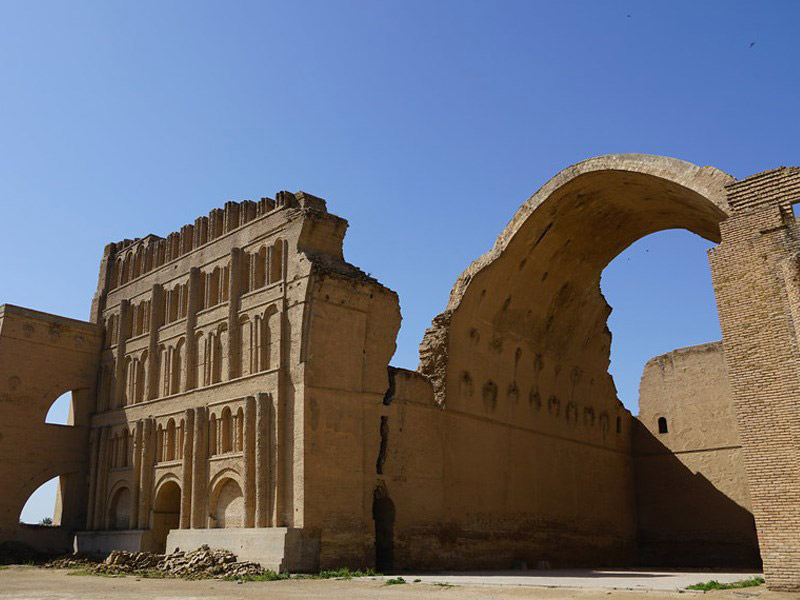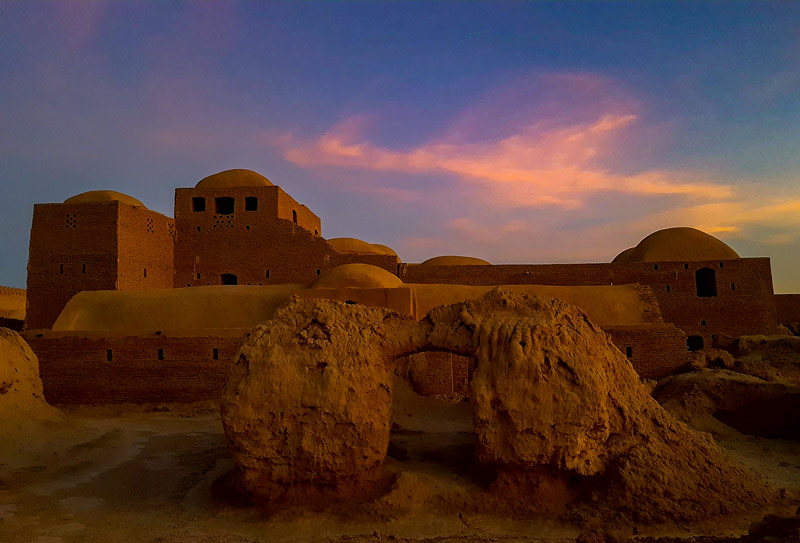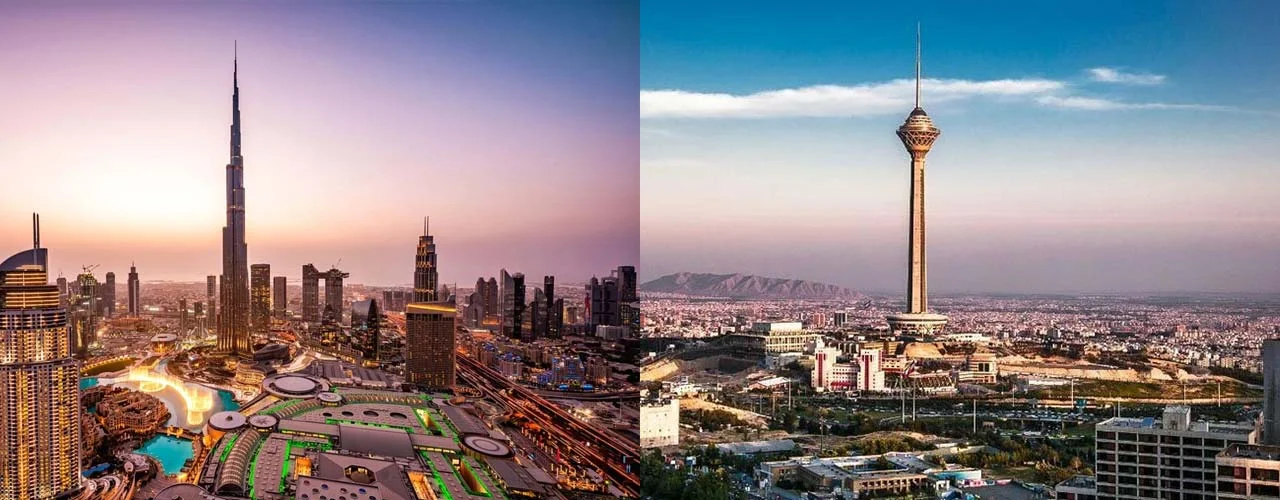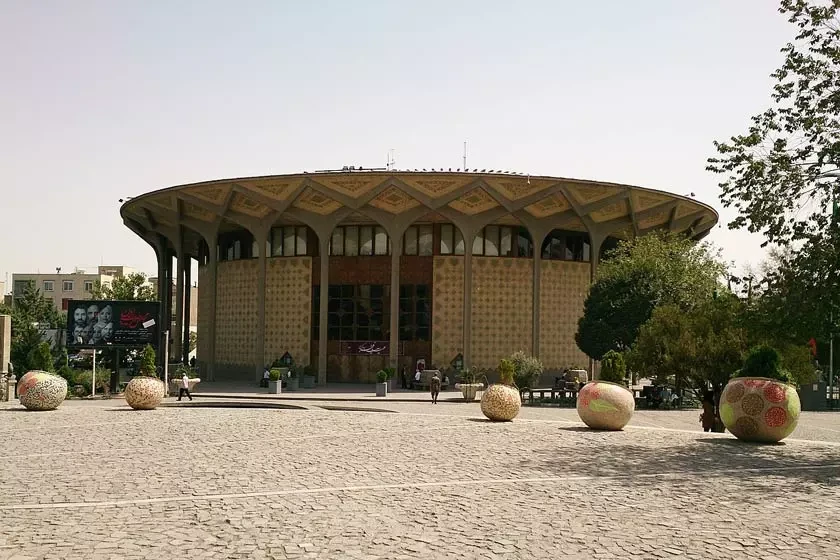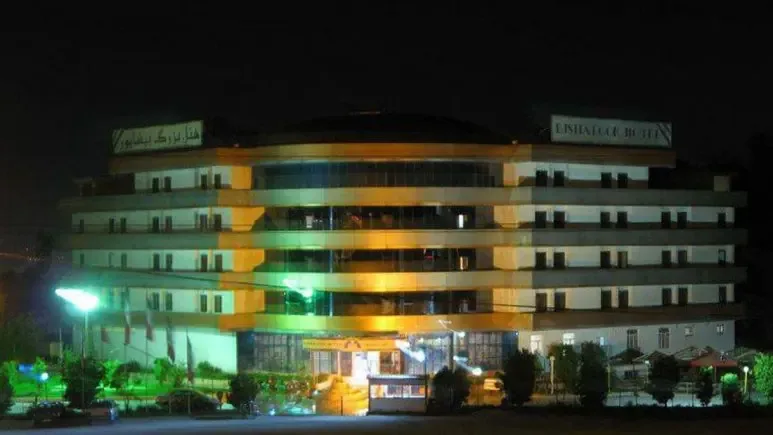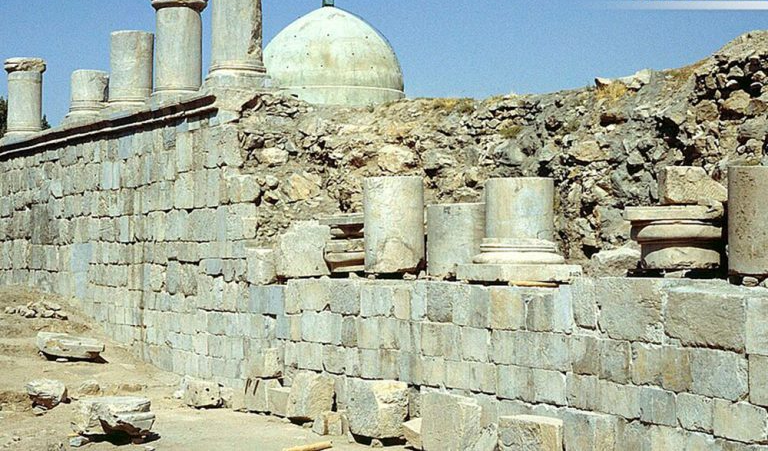Taq Kasra: A Glimpse into Iraq’s Storied Past
The Taq Kasra, also known as the Arch of Ctesiphon, is one of the historical monuments left from the Sasanian Empire during ancient Iran. It is currently located in Iraq. The construction of this structure is considered a masterpiece of ancient Iranian engineering, as the architects utilized minimal tools and resources. Today, Taq Kasra stands as one of the prominent examples of the Sasanian-era barrel vault architecture.
Over the years, due to changes in territorial boundaries and negligence, Taq Kasra, once within the domain of the Iranian rulers, became separated from Iran and is now situated in Iraq. Unfortunately, the historical neglect over recent years has caused significant damage to Taq Kasra. While it used to be the entrance of the Kasra Palace, currently, very little remains of this magnificent historical structure. Kasra Palace, also known as the Iwan Madain, was an entrance to Taq Kasra in the past.
The Iwan Madain or Taq Kasra is one of the remarkable attractions in Iraq with a rich history. If you are interested in learning about this unique historical monument, its architectural wonders, and the story of its construction, read on.
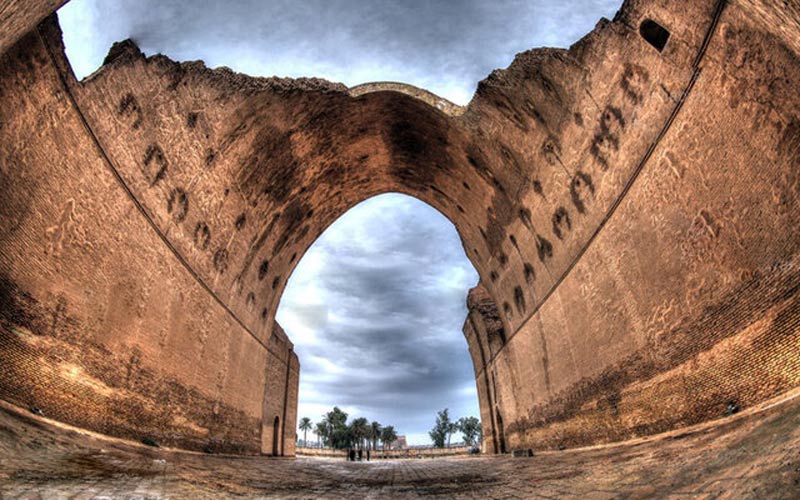
What You Need to Know About Taq Kasra:
- 1.Taq Kasra (Iwan Madain):
Taq Kasra, also known as the Arch of Ctesiphon, is considered one of the most beautiful historical structures remaining from the Sasanian era, now located in Iraq. - 2. Location of Taq Kasra:
Taq Kasra is currently situated in the country of Iraq, specifically in the Diyala Province, approximately 40 kilometers southeast of Baghdad, on the eastern bank of the Tigris River. - 3. Story of Taq Kasra Construction:
The story of the construction of the palace and the Taq Kasra is highlighted in the Shahnameh by Ferdowsi. According to the narrative, King Khosrow Parviz invited numerous architects and builders to choose the best for the construction of a grand palace. Eventually, three architects were selected, including a notable one named Farqan. - 4. Architecture of Taq Kasra:
Taq Kasra is considered one of the prominent examples of Sasanian architecture from the third century AD. The structure resembles other historical monuments of that era, and it is renowned for its impressive dimensions, with an approximate height of 37 meters, mouth width of 25 meters, and a depth of around 50 meters. The facade is covered with yellow bricks. - 5. Architectural Marvel of Taq Kasra:
Taq Kasra is celebrated as the world’s tallest single-span brick vault structure built without a supporting framework, showcasing the engineering prowess of ancient Iran. - 6. Crack in Taq Kasra:
Over time, Taq Kasra has suffered serious damages, and much of its original structure has been lost. The neglect and lack of attention have led to significant cracks and deterioration. - 7. Taq Kasra and the Birth of the Prophet:
Taq Kasra is associated with historical events, and some traditions suggest a connection to the birth of the Prophet Muhammad. - 8. Poetry about Taq Kasra:
Taq Kasra has inspired poets, and there are verses celebrating its grandeur and historical significance. - 9. Images of Taq Kasra:
Visual representations of Taq Kasra showcase its monumental arch and the surrounding walls, offering a glimpse into its historical beauty.
Taq Kasra, also known as the Arch of Ctesiphon, stands as a testament to the architectural and engineering achievements of ancient Iran. Its historical significance and unique features continue to capture the interest of those intrigued by the marvels of the past.
The Kasra Arch, also known as the Taq-e Kasra, is one of the finest examples of architecture from the time of the Sasanian Empire, exhibiting similarities with other remaining structures from ancient Iran. Although significant portions of this historical building have been lost over time, engineers have managed to reconstruct the model of the palace and Kasra Arch using modern software before its destruction.
Currently, only the entrance of the Kasra Arch remains, and it is at great risk of collapsing. The height of the Kasra Arch reaches 37 meters, making it a remarkable structure for its time in ancient Iran, constructed without advanced tools and machinery. During the construction of the Iwan of Ctesiphon, the use of arch-shaped entrances was common, and due to the shortage of wood resources in Iran, architects developed new methods for designing arches, replacing wooden frameworks with angular rings placed on top of each other and filled with mortar. The process started from one side of the building and ended on the other. These arches were elliptical in shape, and gypsum was used as the mortar.
The construction of tall buildings with arched entrances began during the rule of the Arsacids in Iran and gradually evolved during the Sasanian era. The design of circular arch façades was also prevalent during this time, using bricks in the construction of various examples. To ensure the stability of these arches, they constructed sturdy walls with significant width, avoiding the placement of additional holes and windows in these walls. Consequently, the entrances of such structures are relatively dark.
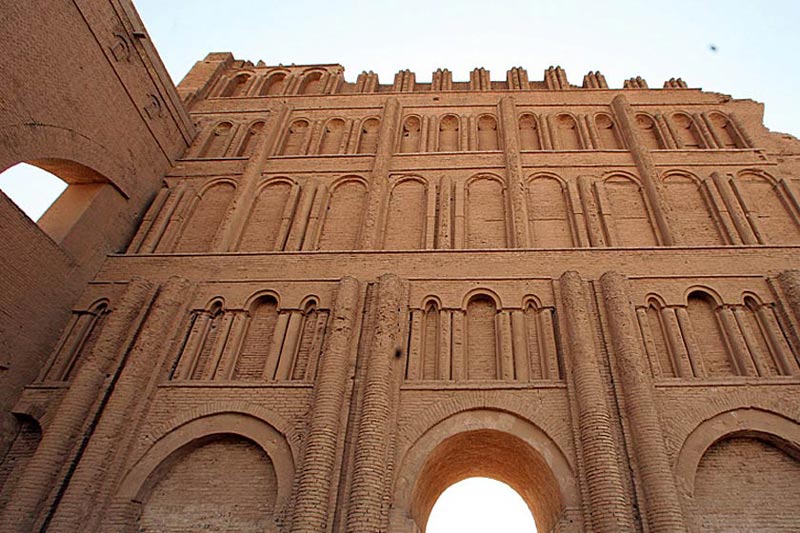
The Kasra Arch is the tallest vaulted arch in the world, built solely with materials and mortar, without any formwork in its structure. Before parts of it were destroyed in 1930 due to flooding, the upper wall of the Iwan of Ctesiphon was close to seven meters in height, and rooms with column-shaped entrances were visible on either side of the entrance arch.
Overall, the architecture of the Kasra Arch is considered one of the most valuable examples of ancient Iranian architecture both from an engineering and historical perspective. During the Sasanian era, it served as a significant venue for special ceremonies and celebrations. The famous Iranian carpet, known as “Baharestan,” was also located in this palace.
Over the years, the Kasra Arch has been a source of inspiration for many renowned architects worldwide, who designed and built structures inspired by it. The Museum of Ancient Iran, designed by the prominent French architect André Godard, is an example of a structure influenced by the arches of Ctesiphon. The main entrance of the University of Tehran, constructed by Mohsen Moghadam, a distinguished professor and archaeologist, is another building made from the arch façades of ancient Iran.
Architectural Wonder of the Kasra Arch:
The construction of the Kasra Arch and its palace reveals several remarkable aspects that astonish contemporary engineers and architects. Building a structure with a height of 37 meters and a length of 50 meters without modern tools and facilities seems unimaginable, highlighting the skill of its ancient builders. Additionally, having a seven-meter-high wall above the Kasra Arch adds to the architectural marvel of this structure.
The skill of ancient architects in the construction of the Kasra Arch captivates the attention of today’s engineers. Constructing the arch solely with bricks and using gypsum mortar is another noteworthy aspect of this building. Despite the numerous damages caused by wars, floods, and earthquakes, the Kasra Arch still stands. While the Sasanian kings aimed to showcase power and wealth through the construction of palaces and the Kasra Arch, it is now recognized as a valuable example of ancient Iranian architecture and engineering.
Crack in the Kasra Arch:
The location of the Kasra Arch in Iraq has inflicted significant damage on this ancient structure. Unfortunately, the neglect of the Iwan of Ctesiphon in previous years has led to the loss of a considerable part of this historical monument. The recent crisis of war and insecurity in Iraq has further increased the risk of its destruction.
Despite the extensive archaeological excavations around the city of Ctesiphon in recent decades, there have been no significant efforts to protect the Kasra Arch and the remaining ruins of other surrounding monuments. Additionally, despite its prominent historical features, this structure has not been registered in the UNESCO World Heritage List.
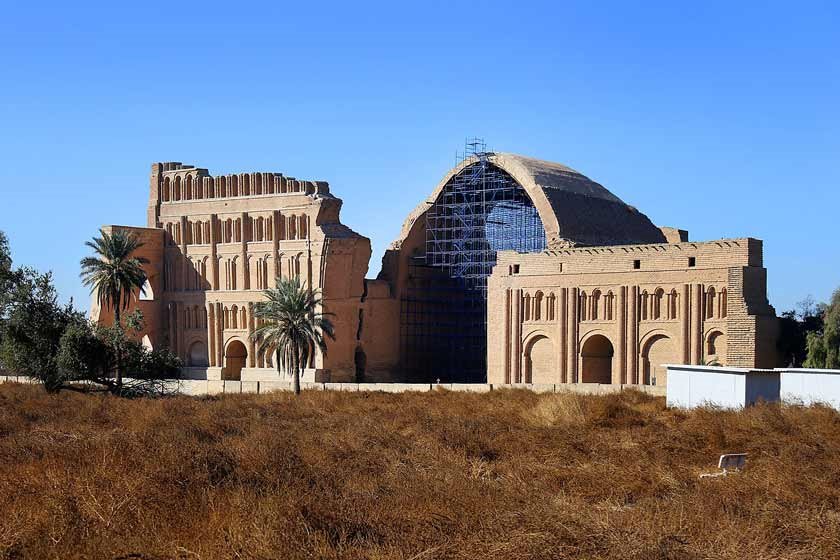
Unfortunately, as of 2021, additional parts of the Kasra Arch have collapsed, and the crack in the arch is progressing day by day, posing a serious threat to the complete destruction of this 2000-year-old structure. Water leakage into the crack and recent climate changes have exacerbated the crisis for the Kasra Arch.
Iranian experts, after visiting the Kasra Arch, consider the possibility of its complete collapse. The roof of the Iwan of Ctesiphon is in a critical condition due to the passage of time and inadequate maintenance. Over 60% of the bricks in the arch facade have already collapsed, and with the current trend, the complete destruction of this structure in the near future is not unlikely. Unfortunately, due to the COVID-19 pandemic, decision-making regarding the preservation of this historical monument is delayed. Hopefully, the Iranian Cultural Heritage Organization and the Iraqi government will show more concern for the preservation of this valuable historical building.
The Kasra Arch and the Birth of the Prophet:
Numerous narratives mention the breaking of the walls of the Kasra Arch at the time of the birth of Prophet Muhammad. Some religious scholars’ works and interpretations refer to the Kasra Arch and its transformation during the Prophet’s birth. According to these quotes, on the night of Prophet Muhammad’s birth, the Kasra Arch was broken, 14 of its arches collapsed, the fire in the Fars Fire Temple was extinguished, and Lake Sawah disappeared. Although these accounts and quotes have been transmitted over time, there is some disagreement about their accuracy.
Frequently Asked Questions
Where is the Kasra Arch located?
The Kasra Arch is situated in the country of Iraq, approximately 40 kilometers southeast of the city of Baghdad.
Who built the Kasra Arch?
The origin of the Kasra Arch is debated among archaeologists. Some attribute its construction to the Arsacid period, while others believe it was built and expanded during the reign of Anushiravan of the Sasanian Empire. In Ferdowsi’s Shahnameh, Kasra (Chosroes) Parviz, a Sasanian king, is mentioned as the builder of this historical monument. However, in most accounts, Shapur I of the Sasanian Empire is credited as the creator of the Kasra Arch.
What is the significance of the Kasra Arch for Iranians?
The Kasra Arch is a historical structure dating back to the era of ancient Iran’s governance. It stands as one of the most prominent examples of architecture from the Sasanian period, holding cultural and historical importance for Iranians.
What is the marvel of the Kasra Arch?
The architectural style of the Kasra Arch, considering the limited tools available during its construction, is a marvel that astounds engineers. The height and construction of this structure with the resources and technology of its time contribute to its architectural wonder.

